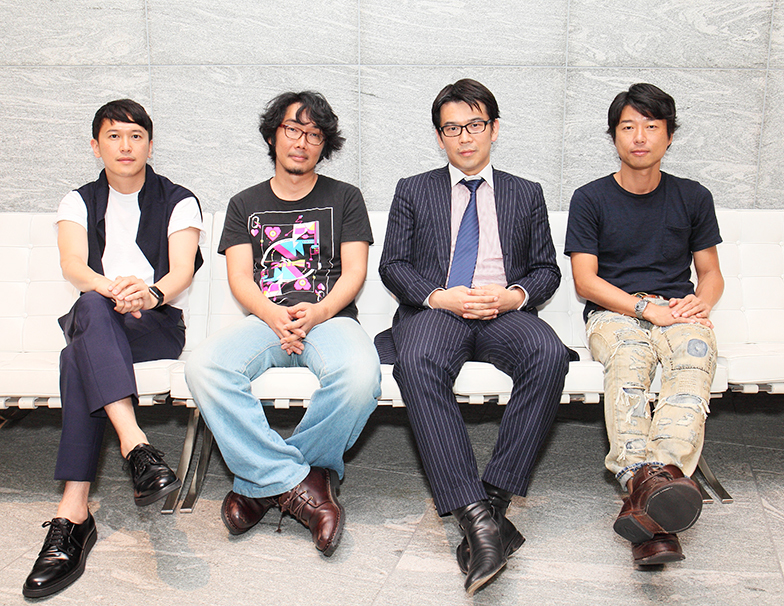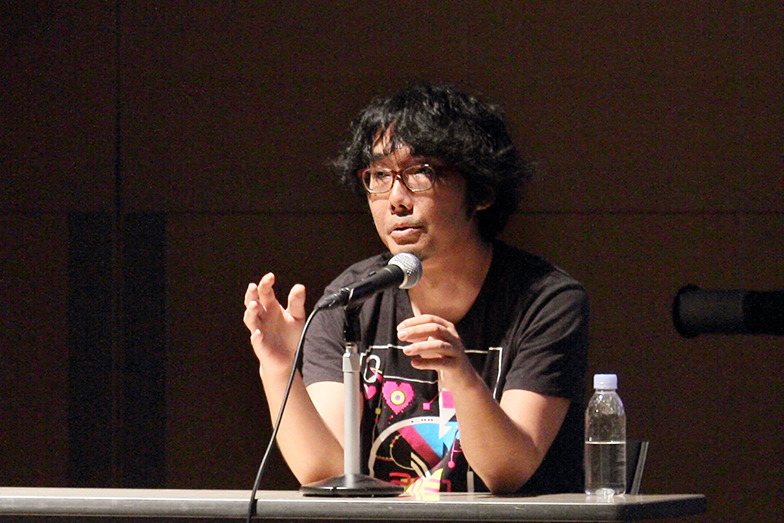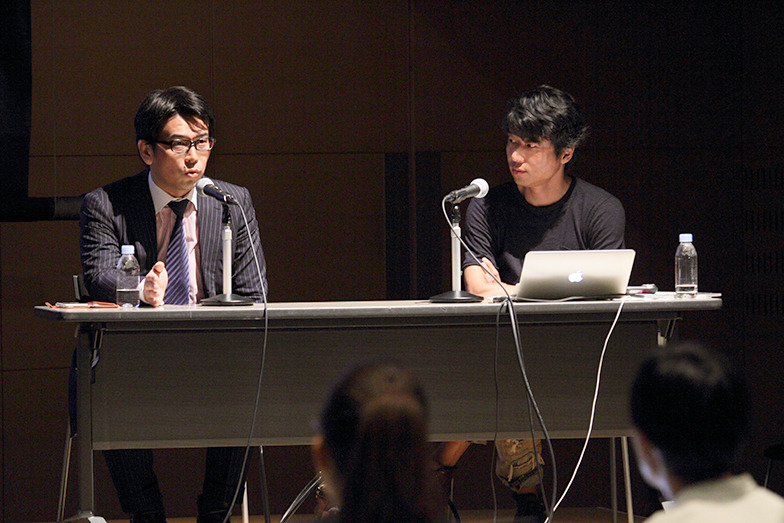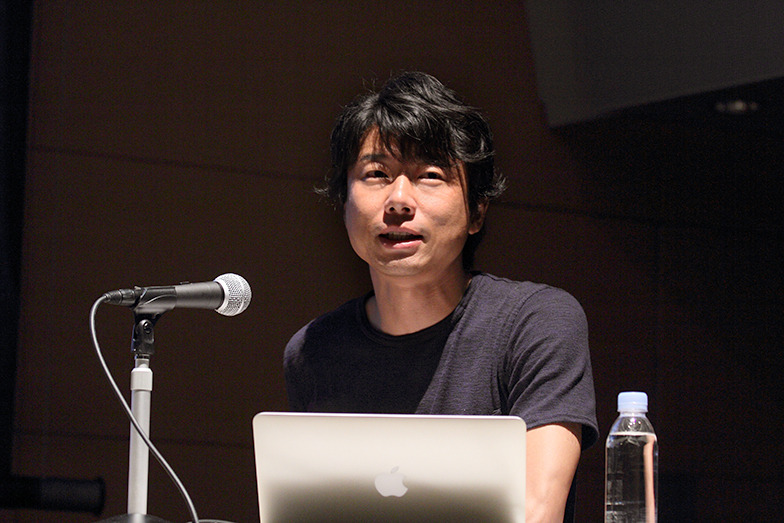The Decoded Fashion Tokyo Summit 2015, an event bringing together leaders from the fashion and IT industries to collectively envision the future of fashion, was held for the first time in Tokyo this July. Advances in digital technology are expected to bring fundamental changes to the fashion industry across every phase—from business transformation and streamlining business processes to acquiring new customers, developing new materials, and exploring new forms of expression. This time, we invited Megumi Wakabayashi, Editor-in-Chief of WIRED magazine (Condé Nast Japan); Tatsuya Kitagawa, who is engaged in new business development at Isetan Mitsukoshi Holdings; and Kaie Murakami, who leads SIMONE, a branding agency specializing in the fashion and beauty sectors. Yoshihiko Kyoi of Dentsu Inc. asked them about the future of "Fashion × Technology." We present the discussion in two parts.

(From left) Murakami, Wakabayashi, Kitagawa, Kyoi
Has Japan's fashion business
hasn't been updated in 60 years!?
Kyoi: Today, I hope we can discuss the fusion of fashion and technology. The title "Decoded Fashion" refers to a conference event founded in New York in 2012 by Liz Basseller, a former CBS news producer, aiming to merge fashion and technology. This July, it made its debut in Japan under the theme "Fashion in the Digital World." Condé Nast Japan is the organizer, and Dentsu Inc. is also assisting. The three guests here today are all speakers who participated in this event.
Kitagawa: I hold the somewhat mysterious position of Special Assignment in the Secretary's Office at Isetan Mitsukoshi Holdings (laughs). Originally, I worked at an American NGO handling UN-related projects. After returning to Japan, I worked in consulting and then ran a business selling rare Japanese goods globally via e-commerce.
What I truly came to realize there was that IT is merely a mechanism; the real content placed upon it is what truly matters. I gathered product information at exhibitions nationwide and worked tirelessly to develop content. During this time, I met President Onishi (Hiroshi) of Mitsukoshi Isetan and was shocked to discover that department stores are packed with real content that people in the internet industry covet. That's why, in 2013, I took the plunge and joined this large corporation. I was tasked with creating new businesses using digital technology. This spring, I took on a newly established special assignment role, working on a mission to create new value that transcends the walls of vertically siloed organizations.
Wakabayashi: As Mr. Kitagawa mentioned, digital technology has this characteristic of cutting across vertical segments. WIRED is also a media platform that can cover any theme, with digital technology at its core.
Digital is shaking up the pyramid structures of existing industries, and the fashion world is no exception. Decoded Fashion is an event we decided to hold in Japan after featuring fashion in WIRED.
MURAKAMI: I began my career as a designer at ISSEY MIYAKE, where I spent nine years working on advertising and fashion show direction. I founded SIMONE to explore new possibilities in combining fashion and technology.
Today, we provide one-stop direction for the entire brand-building process—not just web and advertising, but also product development and media creation. We focus our branding efforts on three key sectors: fashion, luxury, and beauty.
Kyoi: In the first half of the Decoded Fashion talk, the theme was insights into the Millennial generation (digital natives born from the 1980s to the 2000s), right?
Murakami: Actually, we barely discussed Millennials at that time. While Millennials are indeed a major global theme, as Liz pointed out, "Japan is lagging behind." In Japan, there are things we need to consider before that.
Rather than pouring effort into half-hearted campaigns or sales promotions, it's crucial to simply "place the brand where it naturally belongs, aligned with its DNA." If we get that right, the gap in information sensitivity with Millennials isn't actually that significant.
Wakabayashi: I think it's a mistake to view millennials solely as a communication trend. The shift from mass media to social media isn't just a change in communication strategy; it's a major transformation forcing businesses to rethink their very nature. For example, the starting point of communication is changing – it's no longer about adding a story to a product to sell it, but about having that story embedded from the development stage. I believe the question of how to engage millennials has become a kind of symbol for this shift. When consulting with apparel and department store folks, I feel like the conversation basically boils down to "let's push products onto people."
But isn't that very mindset—attracting people to stores and getting them to open their wallets—already unsustainable? Furthermore, when I ask them, "Do you know what happens to that item after the customer buys it?" they answer, "No, not at all." But the relationship between people and clothes generates an enormous amount of time from that point onward, right? Apple is like this, and probably most IT companies view customers not as "consumers" but as "users." A user implies a state of constant engagement, and that perspective is becoming necessary.

Murakami: The backend of the fashion business hasn't fundamentally changed structurally in about 60 years. Neither the profit distribution nor the cost structure. It's clear that the evolution of digital technology forces everything that has supported this business to change. For example, if technology adoption boosts e-commerce sales or reduces store operating costs, the freed-up funds from physical store development and labor costs could be redirected to production. This would allow creating higher-quality products than competitors at the same price point.
The first thing we should consider is this kind of business structural transformation. Communication comes after that.
Kitagawa: Wow, you're getting right to the heart of it (laughs). Digital is fundamentally about business transformation. It's not just about reacting because e-commerce is growing. For instance, if e-commerce accounts for over 50% of sales, the number of staff needed in stores could drastically decrease. Out of ¥300 billion in sales, operating profit might be around ¥200 billion. When I joined the company in 2013, I was often asked, "Which social media platform should we use?" But just like choosing a mode of transportation—whether you're going to Shizuoka or San Francisco changes the optimal choice.
Similarly, the media you should use changes depending on your purpose. We need to rethink this from the ground up: what kind of management we pursue, what profit structure we build, and what kind of company we should become. I often tell my friends at major apparel companies that manufacturers might not survive unless they become service industries. We need to think about committing to people's lives through clothing. Where that connection is made, we might be able to deliver products. I believe we need to adopt that level of thinking.
Changing with Social Media
The Value of Fashion
Kyoi: I think fashion is a crucial communication tool for creating first impressions. But with social media becoming ubiquitous, people know what you're like before they even meet you. That might mean they don't care as much about fashion anymore. I'm definitely like that (laughs). How will social media impact fashion?
Murakami: What people seek in fashion boils down to two main things: first, that it fulfills a functional need. Second, that it carries the necessary informational value. Wearing a white Prada T-shirt, for instance, signals that you're in a social position where you can afford a ¥30,000 T-shirt.
But in photos posted on social media, a ¥500 T-shirt looks just as good at first glance. Amid this collapse of simple value, I think what's happening now is that people everywhere are rethinking what the essential value of fashion really is.
Wakabayashi: From a marketing perspective, I think the individual as an indivisible unit only held true until the 20th century. Back then, embodying your identity through clothing and establishing your presence among people was a major proposition. But in the internet age, individuals are no longer held accountable for consistency. There's no consistency in Amazon shopping histories. Diversity within the individual has been accepted. At WIRED, we stopped categorizing articles on our website.
Why? Because categorization has become obsolete—an Apple article could belong in "Business," "Technology," or "Culture." What we should focus on is predicting what someone interested in that article will be interested in next. Reading an iPhone article doesn't necessarily mean they're interested in smartphones. An iPhone enthusiast might not care about Galaxy phones, but they might be into bicycles. We want to capture that underlying context.
When I mentioned this to someone, they said, "Wakabayashi, that's what feeling the wind is all about" (laughs). The same wind blows through iPhones and bicycles. The market is incredibly complex. And it's not like there are people who simply "like pleasant breezes." We need to deliver content targeting those moments when people want to feel that pleasant breeze. It's about targeting time, not individuals. That's where stories that evoke that feeling of the wind become incredibly important.
Murakami: That's what fashion fundamentally is. Its appeal lies in creating a single piece—through materials, design, and a mix of complex factors—that captures an indescribable feeling. What makes it even more fascinating is that it's a culture built on intricate elements: what music plays in the background, what kind of space it inhabits.
But when we talk about the post-millennial era, we see this rapidly becoming information-based—or tagged.
For example, a single sneaker gets tagged with "Kanye West," "Nike," "white," "high-top," and so on. The more tags it has, the higher its perceived value. It's a very physical evaluation axis born from search functionality. We have to be conscious of this when creating things, but real sensory experience is still crucial. We need to constantly navigate between these two perspectives.
You can also read the interview here on Adtai!
Planning & Production: Aki Kanahara, Dentsu Inc. Event & Space Design Bureau















